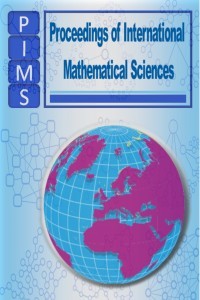FIFA/Coca-Cola World Rankings on the Predictability of the Men’s and Women’s FIFA World Cup: A Comparative Analysis
FIFA/Coca-Cola World Rankings on the Predictability of the Men’s and Women’s FIFA World Cup: A Comparative Analysis
Since 1992, the International Federation of Association Football
(FIFA) has been ranking senior men’s national soccer teams based on a variety
of criteria. In 2003, FIFA extended the FIFA/Coca-Cola World Rankings into
ranking senior women’s national soccer teams. The FIFA/Coca-Cola World
Rankings published just before the 1994 FIFA World Cup USA, 1998 FIFA
World Cup France, 2002 FIFA World Cup Korea/Japan, 2006 FIFA World Cup
Germany, 2010 FIFA World Cup South Africa, 2014 FIFA World Cup Brazil,
2018 FIFA World Cup Russia, 2003 FIFA World Cup USA, 2007 FIFA World
Cup China, 2011 FIFA World Cup Germany, 2015 FIFA World Cup Canada,
and the 2019 FIFA World Cup France were considered. These rankings were
compared to the final results of those FIFA World Cups based on two different
methods of displaying the teams finish and were analyzed. Of the top 16
teams in each of the Men’s FIFA World Cups, 74.1% of those teams advanced
to the Round of 16. Meanwhile, 83.9% of the top 12 teams in each of the
Women’s FIFA World Cups advanced to the Round of 16 or Quarterfinals.
The Pearson correlation coefficient between the Pre-Tournament rankings and
final results was calculated using both ranking methods. The Women’s World
Cups had higher Pearson correlation coefficients for both methods than the
Men’s World Cups. In addition, the Women’s World Cups had higher t-values
and z-scores than the Men’s World Cup when tested for independence and
association between the Pre-Tournament rankings and final results using both
ranking methods. These findings indicate that the Women’s World Cups were
more predictable than Men’s World Cups based on the FIFA/Coca-Cola World
Rankings.
Keywords:
FIFA/Coca-Cola World Ranking, FIFA/Coca-Cola World Ranking, FIFA World Cup Chi-Square, Fisher Exact Test, Pearson Correlation Coefficient,
___
- FIFA. (2005, March 8). FIFA/Coca-Cola World Ranking OVERVIEW OF BASIC PRINCIPLES AND METHOD OF CALCULATION. FIFA.com the official web site of the Fédération Internationale de Football Association. Retrieved February 15, 2022, from https://web.archive.org/web/20050308034148/http://www.fifa.com/en/mens/statistics/rank/procedures/0,2540,3,00.html
- FIFA. (2007, June 4). FIFA/Coca-Cola World Ranking Schedule. FIFA. Retrieved February 15, 2022, from https://web.archive.org/web/20070604211354/http://www.fifa.com/worldfootball/ranking/procedure/men.html
- FIFA. (2017, January 10). Unanimous decision expands FIFA World Cup™ to 48 teams from 2026. FIFA.com. Retrieved March 26, 2022, from https://web.archive.org/web/20170110231324/http://www.fifa.com/about-fifa/news/y=2017/m=1/news=fifa-council-unanimously-decides-on-expansion-of-the-fifa-world-cuptm--2863100.html
- FIFA. (2018). Revision of the FIFA / Coca-Cola World Ranking. FIFA. Retrieved February 15, 2022, from https://digitalhub.fifa.com/m/f99da4f73212220/original/edbm045h0udbwkqew35a-pdf.pdf
- FIFA. (n.d.). Women's ranking. Wiegman: England's squad even better than I thought. Retrieved February 16, 2022, from https://www.fifa.com/fifa-world-ranking/women?dateId=ranking_20211210
- Hoffman, J. I. E. (2014). Fisher exact test. Fisher Exact Test - an overview | ScienceDirect Topics. Retrieved February 17, 2022, from https://www.sciencedirect.com/topics/medicine-and-dentistry/fisher-exact-test
- Prahl, A. (2019, June 9). 5 major differences between the men's and women's World Cups. POPSUGAR Fitness. Retrieved March 26, 2022, from https://www.popsugar.com/fitness/Differences-Between-Men-Women-Soccer-World-Cups-46145453
- Rahman, N. A. (1968). A Course in Theoretical Statistics. Charles Griffin and Company.
- Soper, H. E., Young, A. W., Cave, B. M., Lee, A., & Pearson, K. (1917). On the Distribution of the Correlation Coefficient in Small Samples. Appendix Ii to the Papers of "Student" and R. A. Fisher. A Cooperative Study. Biometrika, 11(4), 328–413. https://doi.org/zenodo.org/record/1431587#.Yh_NCi-B1QI
- Suzuki, K., & Ohmori, K. (2008). Effectiveness of FIFA/Coca-Cola World Ranking in predicting the results of FIFA World Cup finals. Football Science, 5, 18-25.
- Vrbik, J. (2005). Population moments of sampling distributions. Computational Statistics, 20, 611–621. https://doi.org/https://doi.org/10.1007/BF02741318
- Wackerly, D. D., Mendenhall, W., & Scheaffer, R. L. (2012). Mathematical Statistics with Applications (7th ed.). Brooks/Cole.
- Weisstein, E. W. (n.d.). Fisher's exact test. Retrieved February 17, 2022, from https://mathworld.wolfram.com/FishersExactTest.html
- ISSN: 2717-6355
- Yayın Aralığı: Yılda 2 Sayı
- Başlangıç: 2019
- Yayıncı: İbrahim ÇANAK
Sayıdaki Diğer Makaleler
Brandon JOLY, Tom STOJSAVLJEVİC, Mehmet DİK
